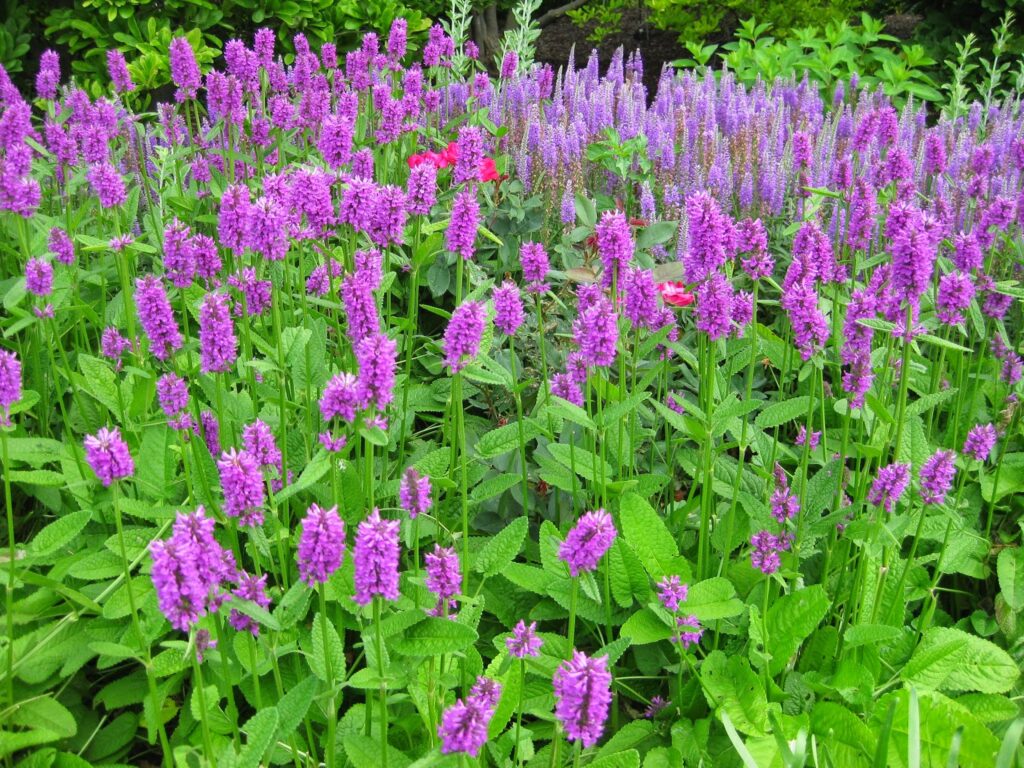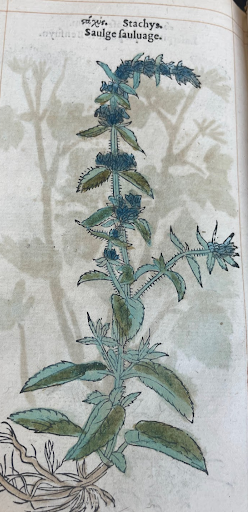Scientific Name: Stachys officinalis belonging to the Lamiaceae family
Origin: Europe and Asia
Description: Betony has long stems with large and thick heart-shaped leaves. The flower is composed of a cluster of two-lipped flowers. The most common type is purple but betony can have white or pink flowers (Augustyn, et. al, 2024).
Historical Medicinal Use: One of Madame de Fouquet’s recipes included grinding betony, marjoram, thyme and rosemary into a fine powder, as this treatment was administered through the nose in order to purge the brain and help against headaches due to a cold.
Modern Medicinal Use: Today betony is said to improve circulation and help the digestive system. It also has calming effects to soothe anxiety (Dev_Admin, 2016).
Augustyn , Adam, et al. “Lamiaceae.” Encyclopædia Britannica, Encyclopædia Britannica, inc., 09 February 2024, www.britannica.com/plant/Lamiaceae#ref196864.
“Betony Uses, Benefits & Dosage – Drugs.Com Herbal Database.” Edited by Leign Ann Anderson et al., Drugs.Com, Drugs.com, 11 Nov. 2022, www.drugs.com/npp/betony.html.
Dev_Admin. “Wood Betony.” Plant Profile: Wood Betony , Integrative Family Medicine of Asheville, 6 Feb. 2016, www.integrativeasheville.org/plant-profile-wood-betony-stachys-officinalis/#:~:text=It%20improves%20circulation%20and%20harmonizes,its%20also%20soothes%20and%20calms.
De Fouquet, Marie. Recueil des remèdes faciles et domestiques, choisis et expérimentés, et très approuvés pour toutes sortes de maladies internes et externes, et difficiles à guerir. 1685.
Fuchs, Leonhart. Histoire des plantes. 1549.

